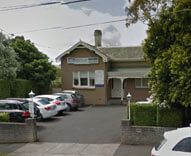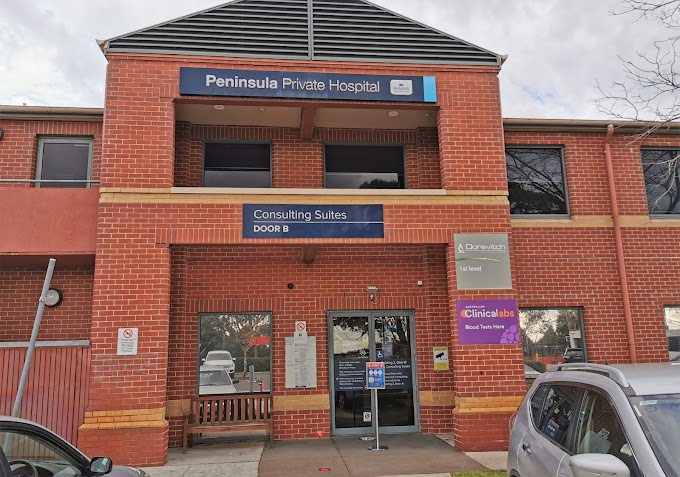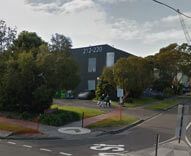Breast Reconstruction, Implant Breast Reconstruction, Autogenous (own tissue) Breast Reconstruction
There is no doubt that the loss of a breast, following surgical mastectomy in the treatment of breast cancer, can have significant psychological consequences in self esteem and a feeling of “womanly wholeness”. Breast reconstruction either at the time of mastectomy or subsequently can restore self confidence and contentment with appearance. It is a difficult decision for a woman to undergo breast reconstruction and in making that decision it is important to gain as much information about the various types of breast reconstruction available to ensure that you do undergo the best reconstructive option in your situation. Also it is important that you have an experienced reconstructive plastic surgeon, who you trust and can relate to as more than one surgical procedure is likely to be necessary.
Dr Ross has run the Breast Reconstruction Clinic at Monash Medical Centre for the past 15 years and did undergo extensive training in breast reconstruction with Prof. Don Marshall in Melbourne as well as John Bostwick and Carl Hartramf in Atlanta (amongst others) prior to commencing practice in Melbourne as a Plastic Surgeon.
There are two main types of breast reconstruction, those reconstructions which use breast implants to create a breast mound and those reconstructions where the woman’s own body tissues are transferred to the chest wall and molded to create a breast mound. There are various factors that may influence the reconstructive plastic surgeon into recommending either of these reconstructive techniques, which will be discussed later.
The other important issue for a woman with breast cancer to consider is the timing of her breast reconstruction procedure. The breast reconstruction can either be undertaken immediately at the time of mastectomy or in a delayed fashion once all the treatment modalities for breast cancer (including chemotherapy and radiotherapy) have been completed.
There are significant advantages of immediate breast reconstruction at the time of mastectomy. They are the reduction in the number of operative procedures required to undertake the reconstruction and the recovery from mastectomy surgery without the loss of a breast. Often after immediate breast reconstruction no further surgery or at most one small secondary procedure is required. The second benefit that particularly appeals to the reconstructive plastic surgeon is that immediate reconstruction performed in combination with skin sparing mastectomy allows a significantly improved aesthetic outcome in terms of creating a natural feeling symmetrical breast with minimal scarring. This is particularly the case after autogenous reconstruction with own body tissues. It is important that women considering immediate breast reconstruction ensure that their oncologic breast surgeon is comfortable with immediate breast reconstruction and works with a suitably trained reconstructive plastic surgeon to undertake this surgery. Some breast surgeons are reticent to undertake immediate breast reconstruction for a variety of reasons but clinical evidence suggests that it does not affect the long term prognosis and further treatment of breast cancer.
Delayed breast reconstruction allows full completion of all the treatment modalities for breast cancer and may be a better option for a woman whose cancer is more advanced at the time of diagnosis. This situation is best discussed with both your breast surgeon and plastic surgeon. Delayed reconstruction will allow time to decide on the various treatment options available in breast reconstruction.
Implant Breast Reconstruction
Breast implants can be used to simulate a breast shape following mastectomy. The procedure can be undertaken in a number of different ways. In the case of an immediate reconstruction with implants, often an implant can simply be placed in the mastectomy pocket to achieve breast symmetry, especially in a small breasted woman (size A or B cup). In other situations a tissue expander will need to be placed initially to create more skin and allow secondary placement of an implant once breast symmetry has been achieved. In the delayed breast reconstruction situation with implants, there will be a shortage of chest wall skin following the mastectomy. Prior to insertion of an implant, skin can be recruited by tissue expansion or tissue transfer in the form of either a skin flap or a skin and muscle flap (usually from the back). In tissue expansion reconstructions an expander is inserted under the skin and inflated, stretching the skin over a period of months prior to expander removal and placement of a definite breast implant. This expansion procedure can take between 3 and 6 months. When a skin and muscle flap (Latissimus Dorsi flap) is used, this is transferred from the back and inset into the mastectomy defect with a breast implant placed under the flap to achieve breast mound symmetry in a single procedure.
There are a number of breast implants available to be used in breast reconstruction. In Australia these are mainly silicone gel filled implants or saline filled implants. In breast reconstruction most plastic surgeons prefer the use of silicone filled implants as these more accurately simulate the feel of a natural breast in breast reconstruction as opposed to enhancing an existing breast when used in breast augmentation. It is known that silicone filled implants have a higher complication rate than saline filled implants and many women prefer to use saline implants because of the increased safety that they offer.
Women contemplating breast reconstruction with implants should understand that if radiotherapy is required following reconstruction that this is likely to result in increased scarring around the implant affecting the reconstructive result. It is also known that women with implant reconstructions have an increased likelihood of needing revisional surgery within 5 years of their initial reconstruction.
Autogenous (own tissue) Breast Reconstruction
Dr Ross believes that if autogenous breast reconstruction is feasible, it will lead to the best, most natural, most durable breast. Reconstruction with soft living tissue will create the most symmetrical natural breast mound. Unfortunately this form of reconstruction is not applicable to all women undergoing mastectomy. The tissue used to recreate the breast mound is most commonly taken from the lower abdominal wall below the belly button. Other options for reconstruction are the buttock, the back and the hip although these are used less frequently. Reconstruction using abdominal tissue usually leaves a flattened abdominal wall as one would see after an abdominoplasty (tummy tuck) procedure, which for many women is seen as an additional benefit. Women who have extensive abdominal scarring or may well have additional pregnancies are probably not candidates for breast reconstruction with abdominal wall tissue (transverse rectus abdominis musculocutaneous flap or TRAM flap).
In immediate breast reconstruction with skin sparing mastectomy the TRAM flap can be raised and inserted into the mastectomy defect in the same size and configuration as the removed breast to give the most natural symmetrical breast reconstruction with minimal scarring. Often women with larger breasts will undergo a contralateral breast reduction at the time of the reconstruction to allow for a more symmetrical and balanced result. Quite frequently no additional surgery is required. In delayed reconstruction, breast symmetry is more difficult to achieve in a single procedure, and a second stage to the reconstruction is almost inevitable.
Abdominal wall tissue can be transferred to the chest wall in two ways. The tissue can be left attached to the body by a pedicle of abdominal muscle and rotated into the mastectomy defect via a tunnel from the abdomen. It can also be dissected free from
the underlying abdomen and then reattached on the chest by rejoining the circulation to the flap tissue using microsurgical techniques. This is termed a free microvascular TRAM flap (or DIEP flap) breast reconstruction. Dr Ross prefers to use the pedicled transfer technique as this has less risk of complications and can be undertaken more simply. The free microvascular tissue transfer technique is usually reserved for more complicated cases or those where a larger sized breast reconstruction is necessary.
It should be understood that autogenous (own tissue) breast reconstruction requires additional scarring and recovery following surgery than other forms of breast reconstruction, however less surgical procedures are likely to be required and the most natural durable breast is able to be achieved. There is often concern about abdominal wall weakness following breast reconstruction but this can be avoided by wearing supportive abdominal garments in the postoperative period while the abdominal wall heals.
The pedicled TRAM flap usually takes about 3 hours to undertake whereas the free TRAM flap can take between 4-5 hours. Women usually remain in hospital 7 days following surgery and are able to return to daily tasks or work within 3 weeks and full activities by 3 months following surgery. Dr Ross believes that the best result following breast reconstruction is usually achieved with immediate TRAM flap at the time of skin sparing mastectomy. For those women considering the benefits of immediate breast reconstruction at the time of mastectomy, if their own breast surgeon does not offer this procedure, Dr. Ross can put them in contact with a suitably qualified breast surgeon, who works in conjunction with him to perform their mastectomy and allow an immediate breast reconstruction procedure in most cases not compromising their breast cancer management.
Most women who undergo successful breast reconstruction report that they feel happier with their appearance and have a degree of renewed self confidence .Please look at the clinical examples featured on this website. Should you have any queries about the information presented here or would like to discuss the situation in more detail please contact our office to arrange an appointment with Dr Ross.
Click here for printable PDF version of article




